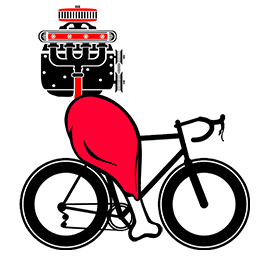Competitive endurance athletes are always seeking ways to improve their performance. A recent study investigated the effects of changing the race distance on an athlete mid-race. The study looked at the Rating of Perceived Exertion (RPE) and how they coped with this manipulation. RPE is a measure of how hard an athlete feels they are working, and it plays a significant role in pacing strategies during endurance events.
In the study, ten trained male cyclists performed three cycling time trials: a 10 km (TT10), a 15 km (TT15), and a manipulated 15 km (TTman). During the TTman, the athletes were initially told they would be performing a 10-km time trial, but at the 7.5 km mark, they were informed that it was actually a 15-km time trial.
Yeah, that would stink! While distances don’t usually change in real races, unforeseen race conditions can similarly affect our pacing, like an unexpected wicked headwind, a course deviation, or any other course elements we had mentally picked up on before the race started that change in race. Or the change could be a mental image you have of the course that is incorrect, and all of a sudden, you encounter a giant hill that you didn’t know was coming in the last part of a race.
The study results showed a significant difference in RPE scores among the three trials up to the 7.5 km mark. Athletes in the TT15 had lower RPE values than those in the TT10 and TTman (changed distance mid-way), suggesting that they were pacing themselves more conservatively for the longer distance. After the 7.5 km mark in the TTman, a transition phase occurred, and the RPE values of the TTman and TT15 became statistically similar.
This study demonstrates that endurance athletes can switch between different perceptions of effort during a workout or race if the demands unexpectedly change. They switch between RPE templates when the race distance is manipulated. The findings suggest that athletes can adjust their pacing strategy based on changes in race distance, which can influence their performance.
Training For Race Effort Changes Due to Changes in Race Conditions
Endurance athletes can use these results to prepare for races where conditions may change unexpectedly, forcing them to increase or decrease their effort. Specifically, athletes should train by doing workouts where the demands randomly change partway through, which helps condition their perception of effort to adapt quickly. If weather or terrain alters a race course, athletes who have practiced this type of adaptability may maintain better pacing, have a lower perceived effort, and potentially better performance. However, more research is needed to prove the performance benefits of this type of training.
In summary, this study shows endurance athletes have a flexible “template” for the level of effort a race requires. With practice, athletes can learn to rapidly adjust this template when race demands change unexpectedly. This may help them cope better with difficult conditions and achieve their best possible performance.

Jordan Fowler has experience as a head swimming coach of the Frisco Swim Team, a TAAF-awarded coach, a track and field distance running consultant for select Texas High School runners, and has competed as a triathlete, road runner, and cyclist. Though he is remarkably slower than he was in his 20s and 30s, he still enjoys endurance sports and sports science studies.
